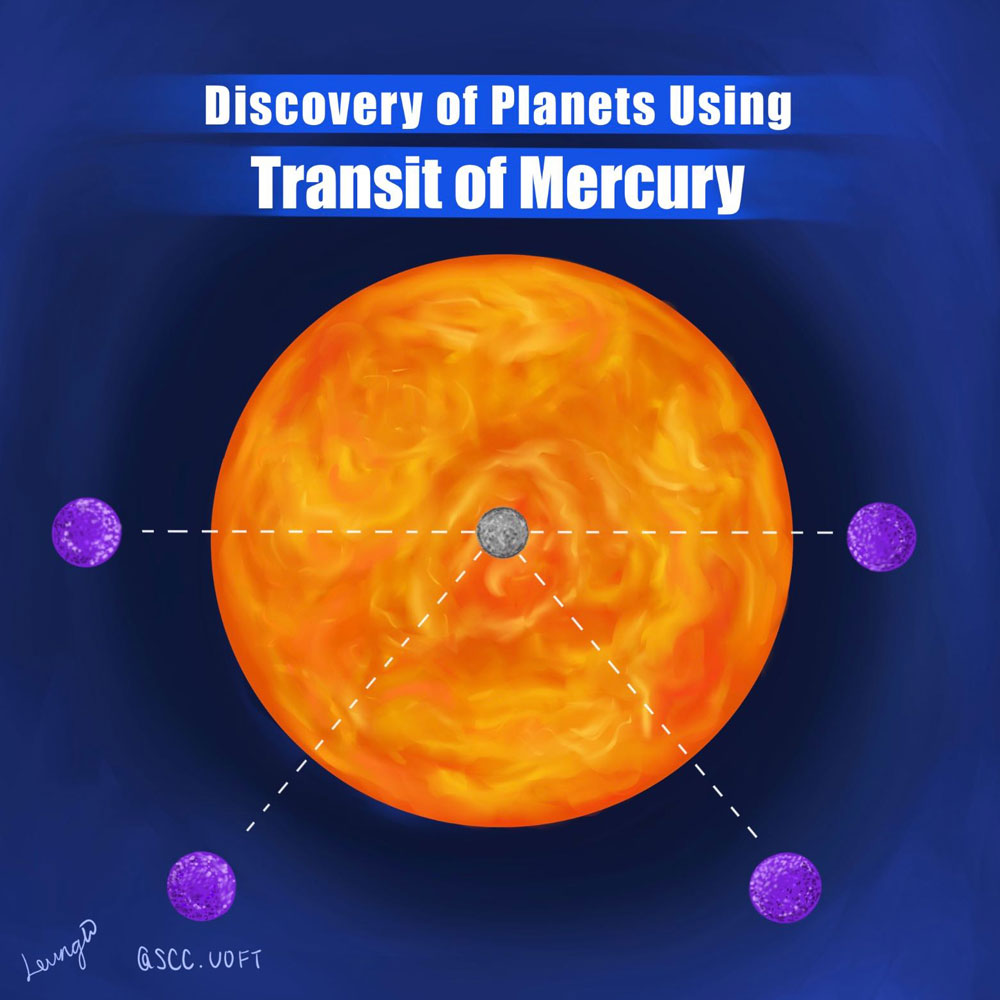
Written by Melissa Croft
Illustrated by Winsy Leung
Last Monday, Mercury began its transit and crossed the sun. This is an incredibly rare event to see from earth, and the next time it will happen will be in 2032. Unfortunately, it will not be visible in Canada, but mark your calendars for 2049 when the phenomenon will arrive in the Canadian skies once again!
Mercury is closer to the sun than Earth, and it frequently passes between them. Mercury is described as “in transit” when observers on Earth can see it pass directly across the sun. When this happens, it appears as a small black dot traversing the star. However, its transit is rare because Mercury’s orbital plane is not lined up with Earth’s. This means that the trajectory of the planet’s movement is not the same as our own, which sometimes makes it hard tell when it is crossing the sun. This happens in May and November, when Mercury appears to pass right above or below the sun from our field of vision. However, the evolving orbits of the planets will cause these dates to change over very long timescales.
Astronomers use transits in other solar systems to discover exoplanets, which are planets that reside outside of our solar system. These are very difficult to study as they are much smaller than stars. So, instead of directly studying planets, astronomers study the small impact they have on stars. One common method is known as transit photometry, in which the brightness of a star is measured. The brightness decreases slightly when a planet passes in front of a star, and if this dimming occurs at regular intervals, there is likely a planet orbiting it!
The difference between the size of a planet and a star can be determined by how much the star’s brightness has decreases when the planet is in transit. A small planet orbiting a large star would cause a small decrease in brightness, while a large planet orbiting a small star would create a bigger one. The color of a star can be used to measure its size, and once the size of the star is known, the size of the planet can be determined! This method does not reveal the mass of the planet, but this approach can be combined with other techniques to figure it out. For instance, the spectroscopic method, which can give the mass of a planet but not its size, can also be applied to discover how much a distant planet weighs. Once astronomers know the mass and size of a planet, the density can be found, which helps them figure out what the planet is made of!
While the transit of Mercury may not seem like a big deal, the transit of planets can provide us with lots of information about worlds distant and different from our own. Perhaps understanding the science behind this event will help you see it in a new light!
Sources:
- https://www.space.com/mercury-transit-2019-has-begun.html
- https://www.planetary.org/explore/space-topics/exoplanets/transit-photometry.html
- https://www.space.com/mercury-transit-2019-science.html